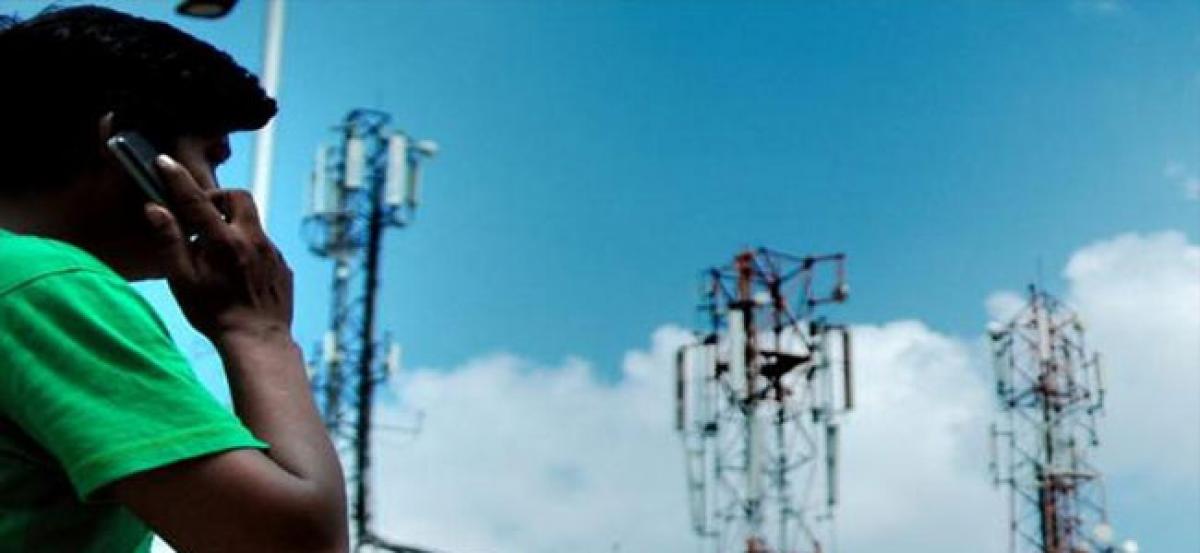Live
- Pandian vows to quit politics if Naveen not re-elected CM
- PM Modi uses Hyderabad lingo, takes jibe at AIMIM
- Accompanied by EAM Jaishankar, diplomat-turned-politician Sandhu files nomination from Amritsar
- Scientists decode early metabolic changes that lead to autism
- Three dead as bus falls into river in Russia's St Petersburg
- I am ready to debate with PM Modi, but he will not do so: Rahul Gandhi
- Senthilkumar, Rathika to lead Indian squads at 22nd Asian Team Squash Championships
- Maharashtra: FIRs against state BJP chief Bawankule & LoP Wadettiwar for MCC violation
- In Telangana, PM Modi gives autograph on photo of girl who sang a song on him
- Petr Kratky extends his stay with Mumbai City FC till end of ISL 2024-25 season
Just In

The Department of Telecommunications (DoT) came out with the draft of its new telecom policy late Tuesday night, with an aim to create 40 lakh new jobs by 202 2, attract $100 billion investment in the sector and ensure broadband coverage at 50 mbps for every citizen.
The draft ‘National Digital Communications Policy 2018’ proposes to address woes of the debt-ridden telecom sector by reviewing licence fees, spectrum usage charges, universal service obligation fund levy.
The Department of Telecommunications (DoT) came out with the draft of its new telecom policy late Tuesday night, with an aim to create 40 lakh new jobs by 202 2, attract $100 billion investment in the sector and ensure broadband coverage at 50 mbps for every citizen.
The draft ‘National Digital Communications Policy 2018’ also proposes to address woes of the debt-ridden telecom sector by reviewing licence fees, spectrum usage charges, universal service obligation fund levy -- all of which add to cost of telecom services -- under the new policy for enhancing ease of doing business in the sector.
The draft said it aims to accomplish provisioning of broadband for all, creating 40 lakh additional jobs in the digital communications sector and enhancing the contribution of the digital communications space to 8% of India’s GDP from about 6% in 2017.
Under the new policy, the government aims to enable fixed line broadband access to 50% of households and start landline portability services.
The policy suggests providing universal broadband coverage at 50 mbps to every citizen and providing 1 gbps (gigabit per second) connectivity to all gram panchayats of India by 2020 and 10 gbps by 2022.
It proposes to adopt “Optimal Pricing of Spectrum” to ensure sustainable and affordable access to digital communications.
The draft policy also proposes recognising of mid-band spectrum, particularly the 3 GHz to 24 GHz range, for next-generation networks.
It also outlined roadmap for high in demand backhaul spectrum for transmitting signals between mobile towers in E and V band as per international best practices.
“Promoting the effective utilisation of high capacity backhaul E-band (71-76/81-86 GHz) and V-band (57-64 MHz) spectrum in line with international best practices ... Rationalizing annual royalty charges for microwave links for backhaul connectivity,” the draft of policy said.
To propel development of India with use of next generation technology through investment, the policy proposes goal to attract “investments of $100 billion in the digital communications sector” by 2022 with help of regulatory reforms.
“The policy recognises the importance of continued improvement in the regulatory framework for attracting investments and ensuring fair competition, to serve the needs of Indian citizens. Given the sector’s capital-intensive nature, the policy aims to attract long-term, high quality and sustainable investments,” it said.
Additionally, the policy aims to remove regulatory barriers and reduce the regulatory burden that hampers investments, innovation and consumer interest.
The draft policy also proposed to rationalise taxes and levies on digital communications equipment, infrastructure and services.

© 2024 Hyderabad Media House Limited/The Hans India. All rights reserved. Powered by hocalwire.com







